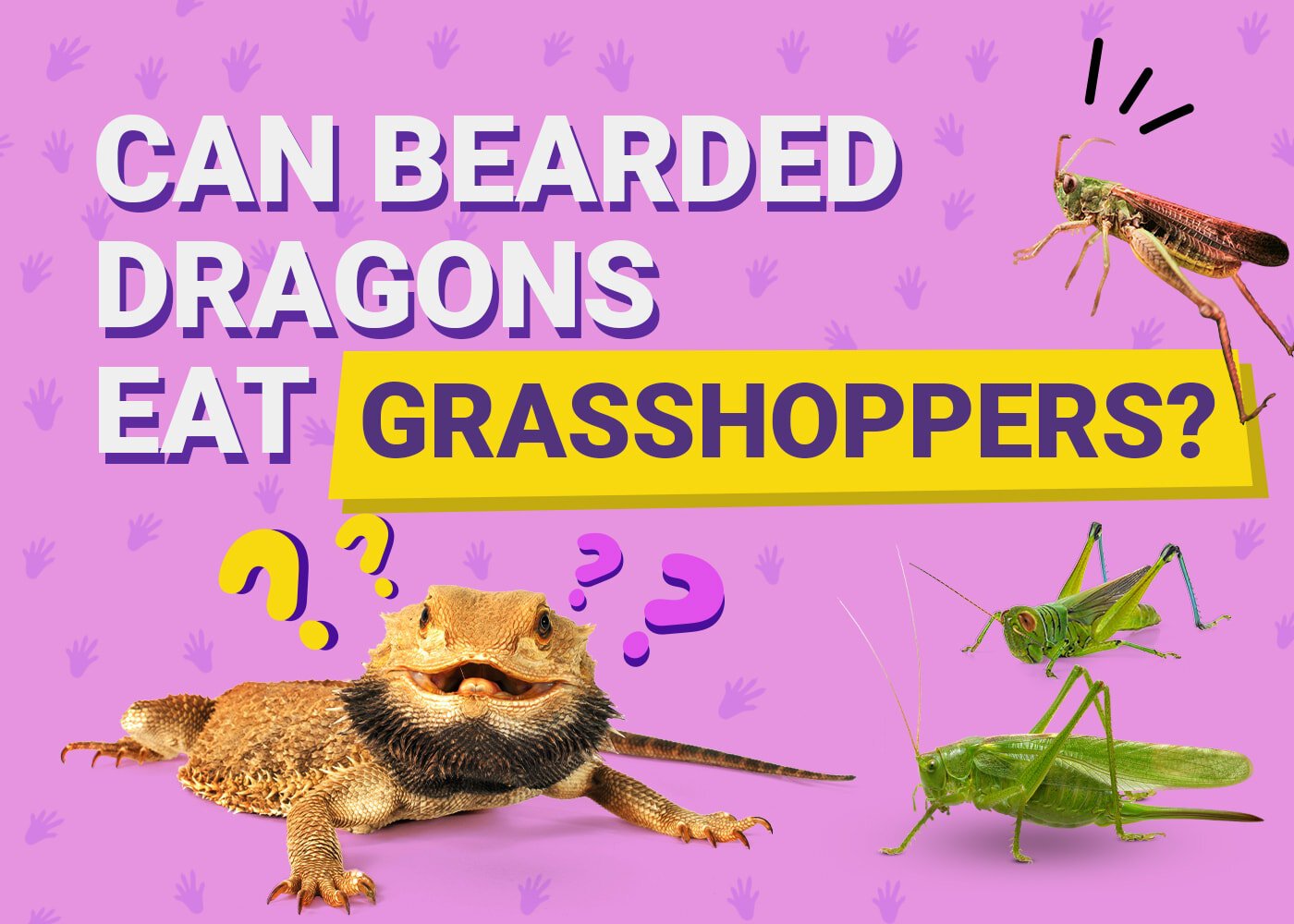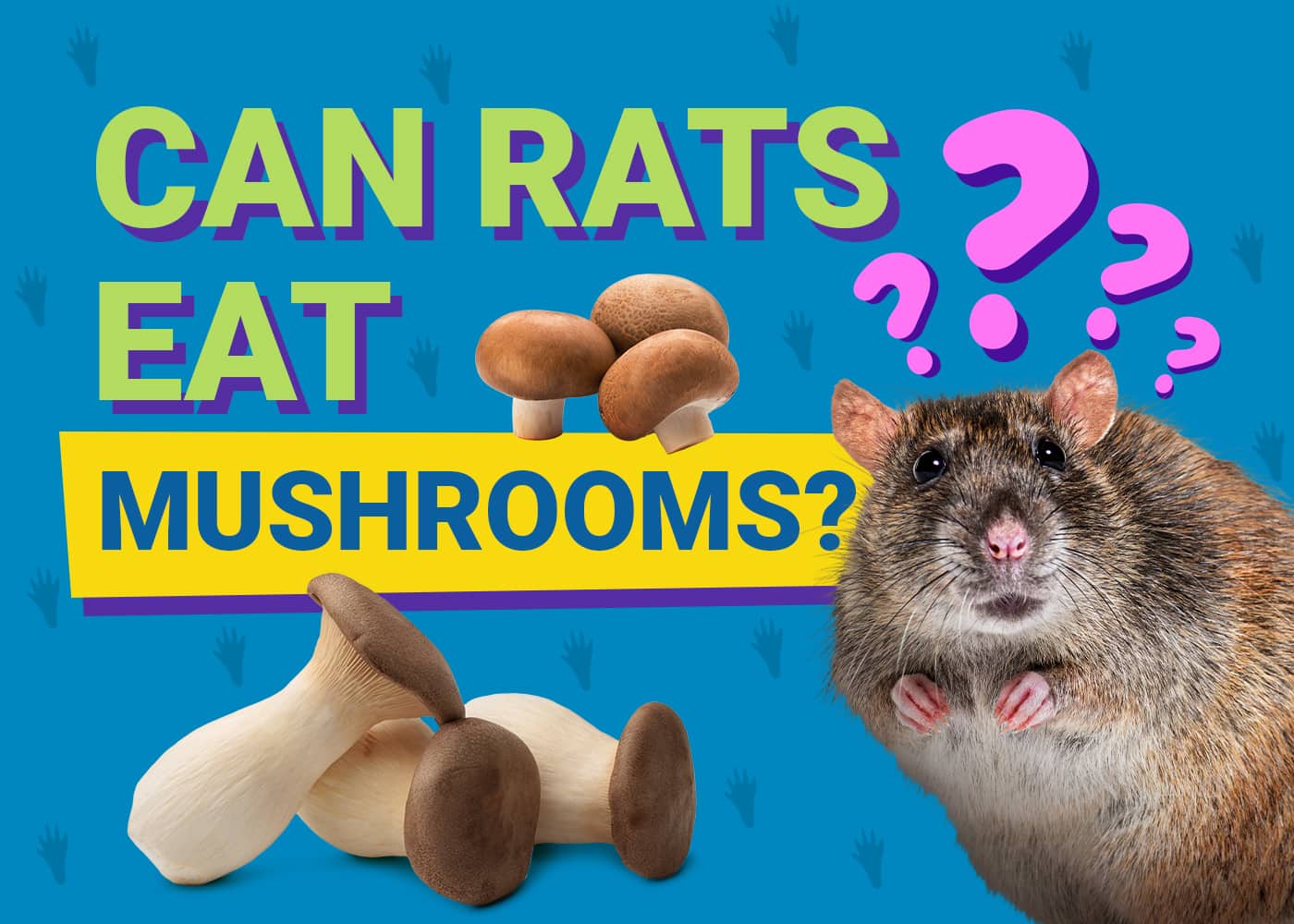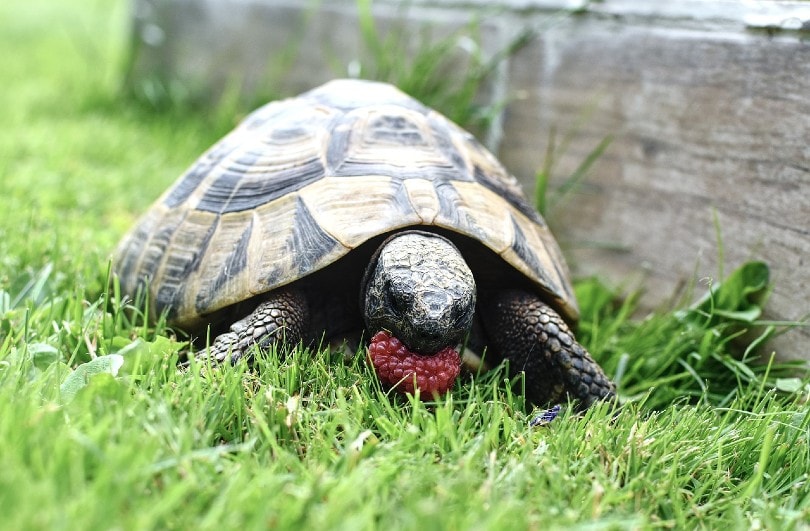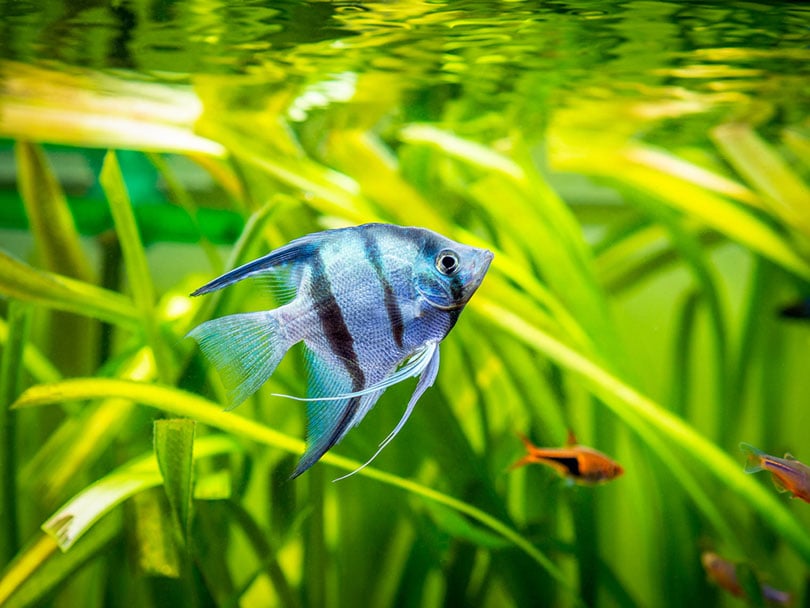VET APPROVED

The information is current and up-to-date in accordance with the latest veterinarian research.
Learn more »Click to Skip Ahead
Have you ever considered a lizard for a pet? If so, you should definitely check out the bearded dragon. This reptile is wonderful for those looking to get into the pet aspect of herpetology. They are one of the most delightful species around and are super easy to take care of.
A crucial part of keeping your bearded dragon happy is making sure they eat healthily. As a reptile owner, you should strive to provide sustenance that your pet would generally find in the wild. Since insects are a big part of a beardie’s natural diet, it makes sense for them to eat certain bugs. But can they eat grasshoppers?
Yes, bearded dragons can eat grasshoppers.
Let’s check out what a bearded dragon’s diet should consist of and how grasshoppers can play a major role.

What Does a Bearded Dragon’s Diet Look Like?
A bearded dragon’s diet consists of a variety of fruits, vegetables, and animal-sourced protein, mainly insects. These are absolutely necessary because bearded dragons are omnivorous. They cannot just eat plant-based food. They need a proper amount of protein in their diet to get optimal nutrition. So, if you’re squeamish around bugs, you’re going to need to get over that fear!
The amount of protein they need also changes as they grow bigger and older. Newborn bearded dragons require a diet that’s high in animal-based proteins. Their diet should comprise 80-90% animal proteins and 10-20% plant matter. As juveniles, these ratios even out to 50% each. As adults, though, bearded dragons require a mostly herbivorous diet (80-90% plant matter) and a small proportion of animal-based protein.
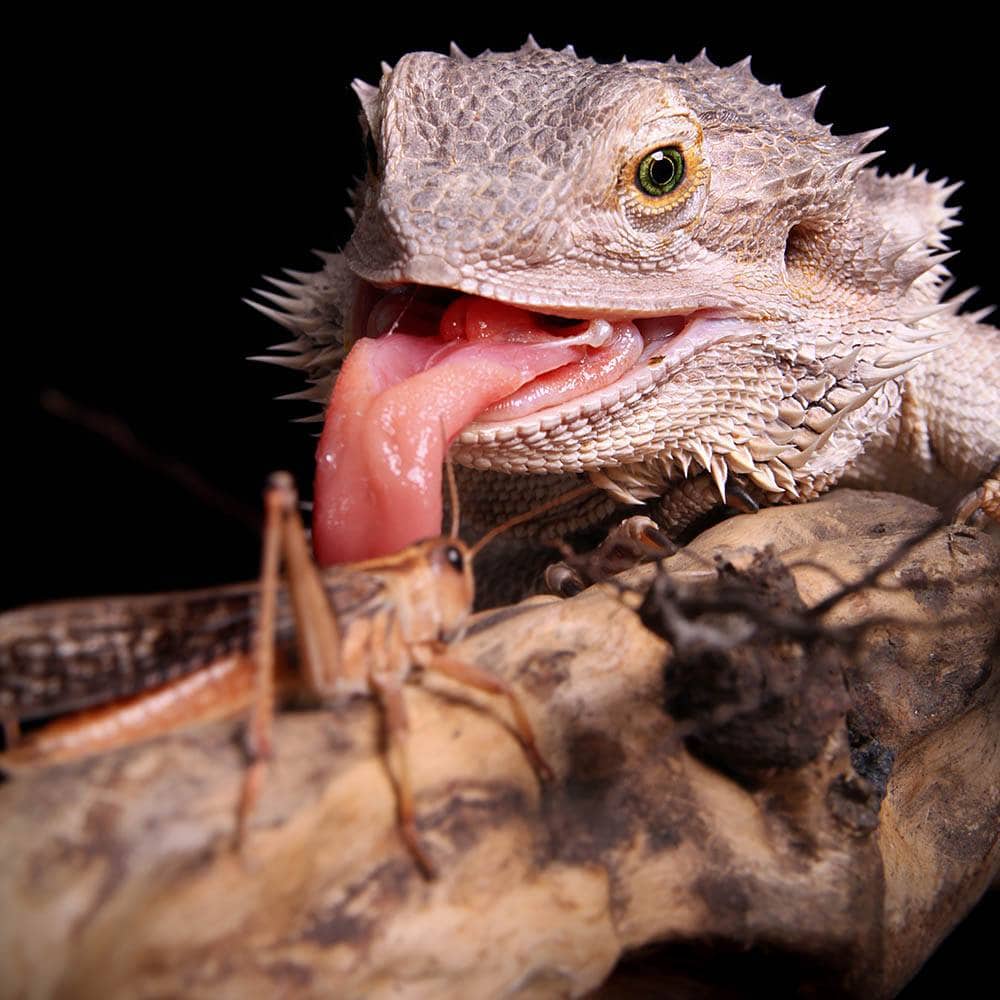
Nutrients Found in Grasshoppers
Aside from grubs and mealworms, grasshoppers are among a bearded dragon’s favorite bugs to eat. Their nutritional yield varies slightly depending on which type of grasshopper you serve your bearded dragon. The following table summarizes the approximate key nutritional composition of two popular variants1:
| Analysis | Green grasshoppers (Ruspolia differens) | Brown grasshoppers (Ruspolia differens) |
| Moisture content | 66.4% | 71.2% |
| Ash | 2.8% | 2.6% |
| Crude Protein | 43.1% | 44.3% |
| Crude Fat | 48.2% | 46.2% |
| Fiber | 3.9% | 4.9% |
Grasshoppers are also a good source of many minerals. A summary of their mineral content is as follows2:
| Mineral (mg/100g) | Green grasshoppers (Ruspolia differens) | Brown grasshoppers (Ruspolia differens) |
| Calcium | 27.4 | 24.5 |
| Magnesium | 33.9 | 33.1 |
| Potassium | 370.6 | 259.7 |
| Sodium | 358.7 | 229.7 |
| Phosphorus | 140.9 | 121 |
| Iron | 16.6 | 13.0 |
| Zinc | 17.3 | 12.4 |
| Manganese | 5.3 | 2.5 |
| Copper | 0.6 | 0.5 |
Due to their unfavorable calcium-to-phosphorus ratio, grasshoppers (like other live prey) should be dusted with calcium before being offered to your bearded dragon.

How Many Grasshoppers Can My Bearded Dragon Eat?
Before sourcing grasshoppers for your bearded dragon, ensure that it is legal to purchase live grasshoppers where you reside. In certain countries (such as the U.S.), purchasing live grasshoppers is considered illegal because of their status as pests.
Even though bearded dragons love to eat grasshoppers, it is important that you only offer them the right amount each time. The first thing to acknowledge is that your bearded dragon pet will need to eat other insects apart from grasshoppers. You don’t want to be stuck eating the same thing every single day, right? Neither does your bearded dragon. Instead, offer grasshopper meals once a week. This way, your pet can enjoy other insects while still getting to relish an old-time favorite.
When your bearded dragon is still a baby, their daily diet should have a 70% protein ratio. This is to ensure that they grow up to be big, strong, and healthy. But how do you know how many grasshoppers are enough? It depends.
How big are your grasshoppers? How hungry is your lizard? Is your bearded dragon in the mood to hunt? A conversation with an exotic veterinarian will help you narrow down the right number for your beardie’s age and size.
Generally speaking, bearded dragons don’t overeat. When they’ve had enough, they’ll simply stop eating. But that doesn’t mean you should leave uneaten grasshoppers in their habitats.
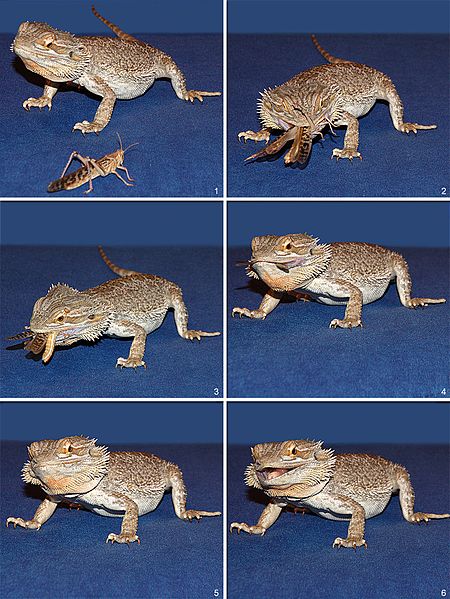

Can My Bearded Dragon Eat Wild Grasshoppers?
Bearded dragons are originally wild reptiles, and they eat many different insects. So, it might seem only logical that it’s safe for them to consume grasshoppers that you’ve caught from your garden. However, that is not the case.
Wild grasshoppers—especially those found in urban or farming settings—may have been exposed to or been in contact with pesticides. These chemicals can be extremely harmful to your little reptilian friend. Don’t risk their health with wild grasshoppers.
You should only feed them grasshoppers that come from a reputable retailer or pet store or that you raise at home.
Other Insects That Bearded Dragons Can Eat
Are you looking to feed your bearded dragon other insects? Give these a try:
- Roaches (dubia roaches)
- Mealworms
- Crickets
- Silkworms
- Phoenix worms
- Waxworms
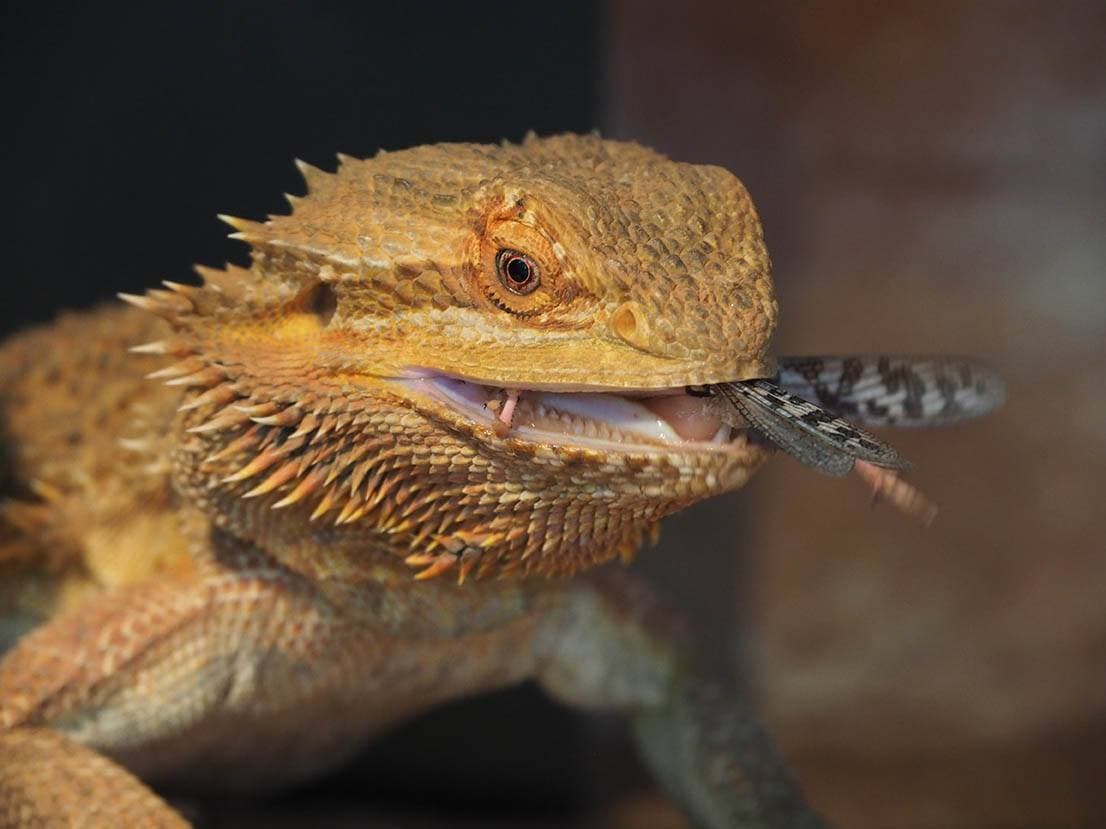

Conclusion
While they might not be tasty snacks to many of us, grasshoppers make a wonderful mealtime staple for bearded dragons. They’re cheap, nutritious, and delicious—for your beardie, at least.
But remember, stay away from wild-caught grasshoppers because you don’t know where they’ve been. They may be carriers of pesticides or other poisons.
Related Reads:
Featured Image Credit: Pixabay
